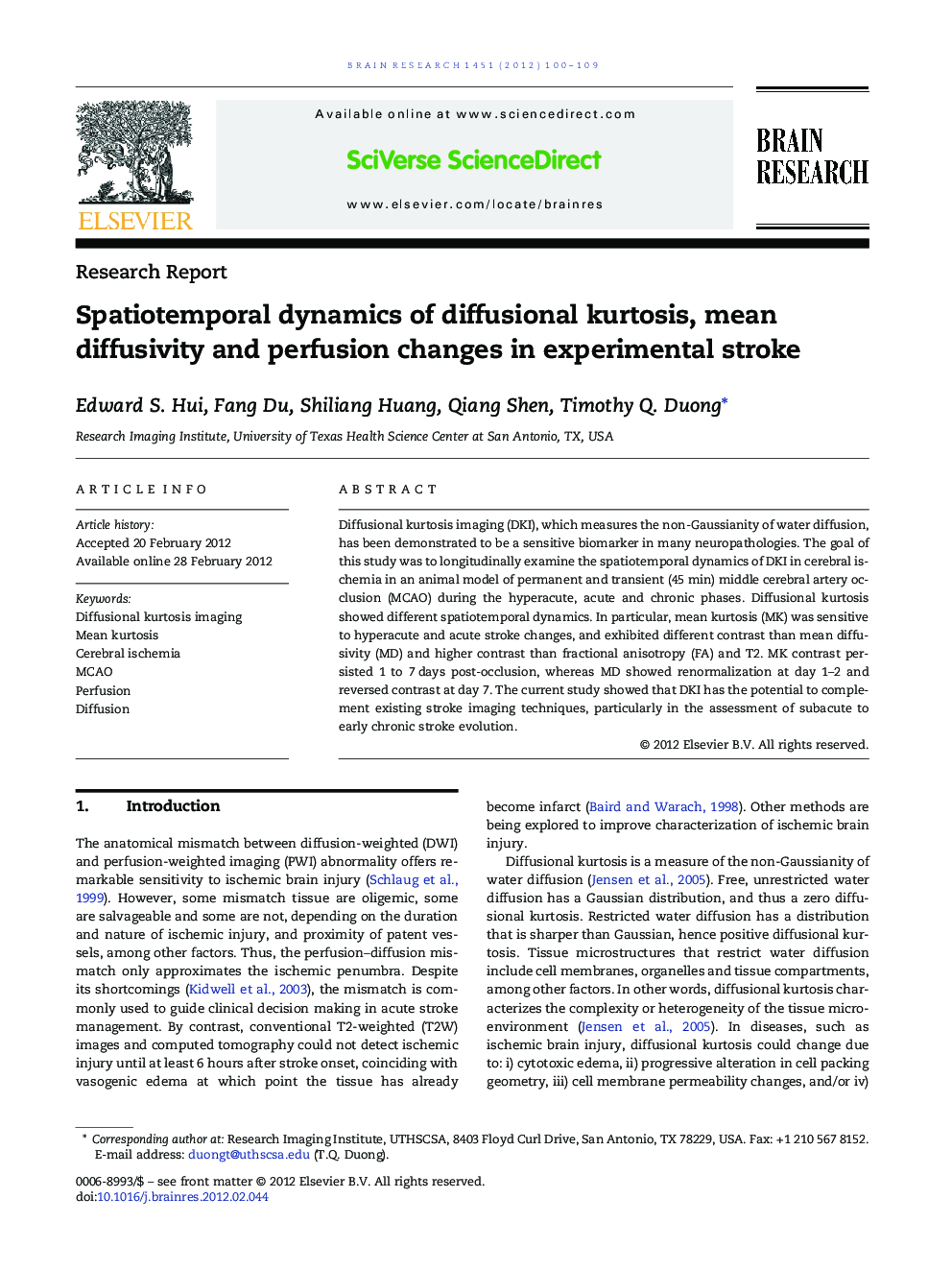| Article ID | Journal | Published Year | Pages | File Type |
|---|---|---|---|---|
| 4325288 | Brain Research | 2012 | 10 Pages |
Diffusional kurtosis imaging (DKI), which measures the non-Gaussianity of water diffusion, has been demonstrated to be a sensitive biomarker in many neuropathologies. The goal of this study was to longitudinally examine the spatiotemporal dynamics of DKI in cerebral ischemia in an animal model of permanent and transient (45 min) middle cerebral artery occlusion (MCAO) during the hyperacute, acute and chronic phases. Diffusional kurtosis showed different spatiotemporal dynamics. In particular, mean kurtosis (MK) was sensitive to hyperacute and acute stroke changes, and exhibited different contrast than mean diffusivity (MD) and higher contrast than fractional anisotropy (FA) and T2. MK contrast persisted 1 to 7 days post-occlusion, whereas MD showed renormalization at day 1–2 and reversed contrast at day 7. The current study showed that DKI has the potential to complement existing stroke imaging techniques, particularly in the assessment of subacute to early chronic stroke evolution.
► Mean kurtosis offers unique contrasts to probe biophysical changes associated with stroke. ► Mean kurtosis was sensitive to hyperacute and acute stroke changes. ► Mean kurtosis contrast had different temporal dynamics than mean diffusivity. ► Mean kurtosis MRI can potentially complement existing stroke imaging techniques.
